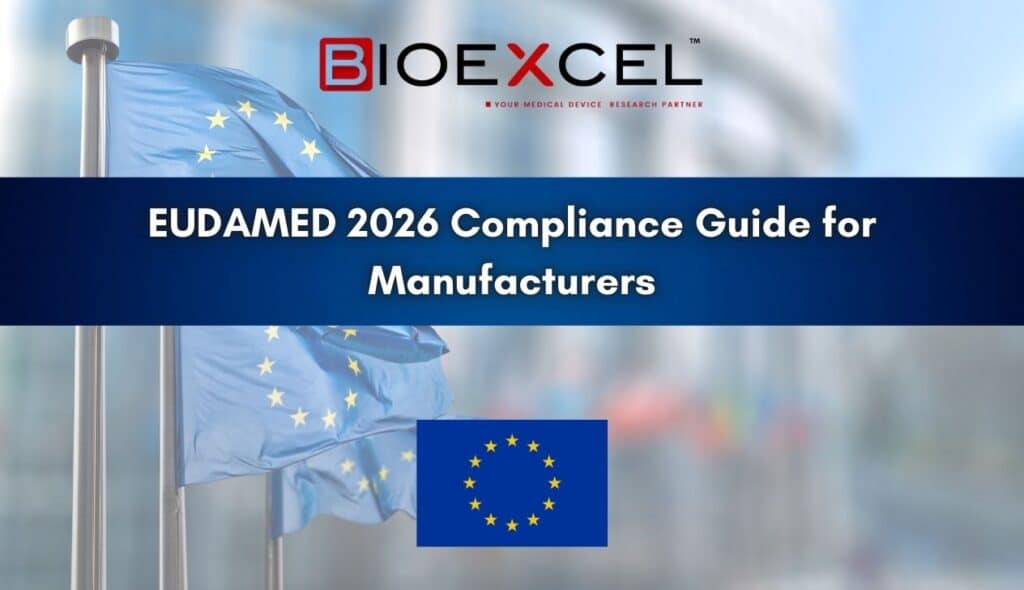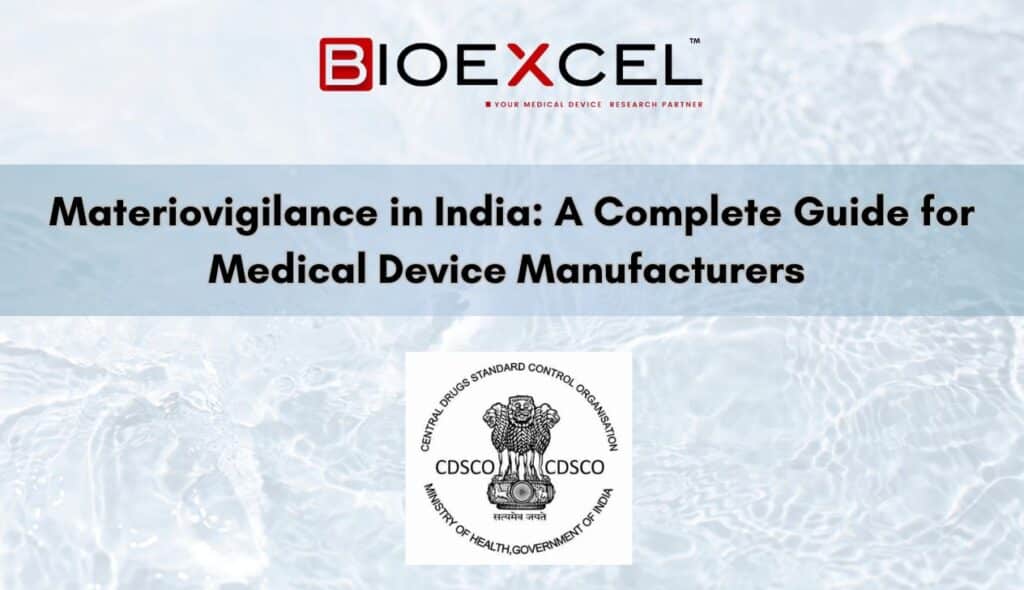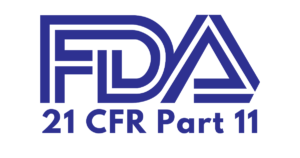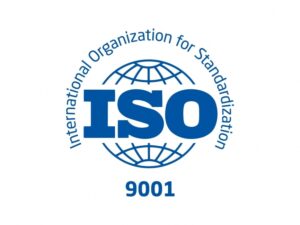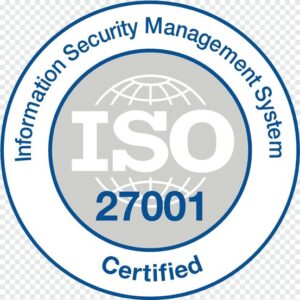EUDAMED and its role in the EU Medical Device market
EUDAMED, the European Database for Medical Devices, is a critical component of the European Union’s regulatory framework for medical devices. It serves as centralized hub for comprehensive information on medical devices available within the EU market. The primary role of the EUDAMED is to enhance market surveillance and transparency by providing national competent authorities with fast access to information, thus contributing to a uniform application of the regulations.
EUDAMED supports two key regulations:
- MDR(EU 2017/745) : This regulation pertains to medical devices in general, setting high standards of quality. and safety to ensure a high level of protection of health for patients and users.
- http://Regulation (EU) 2017/745 of the European Parliament and of the Council of 5 April 2017 on medical devices, amending Directive 2001/83/EC, Regulation (EC) No 178/2002 and Regulation (EC) No 1223/2009 and repealing Council Directives 90/385/EEC and 93/42/EEC (Text with EEA relevance. )
- IVDR(EU 2017/746) : This regulation is specific to in vitro diagnostic medical devices, aiming to establish a robust, transparent, predictable, and sustainable regulatory framework that supports innovation while ensuring safety and health.
- http://Regulation (EU) 2017/746 of the European Parliament and of the Council of 5 April 2017 on in vitro diagnostic medical devices and repealing Directive 98/79/EC and Commission Decision 2010/227/EU (Text with EEA relevance. )
Both regulations are part of a new approch to ensure the smooth functioning of the internal market regarding medical devices, taking as a base a high level of health for patients and users. EUDAMED play an essential role in upholding these standards by serving as a centralized source of information on medical devices, their manufacturers,certifications, and post-market activities, thereby ensuring that only safe and compliant devices reach the market.
What is EUDAMED and its Key features
EUDAMED, or the European Database for Medical Devices, is an IT system developed by the European Commission with the primary purpose of supporting the implemenation amd enforcement of the new regulations on medical devices (MDR) and in vitro diagnostic medical devices (IVDR). It serves as central repository for informationon medical devices sold within the EU, aiming to enhance overall transparency and ensure a high level of health and safety protection.
The IT system is structured around six interconnected modules that covers various aspects of medical device information, including:
- Actor Registration: For the registration of manfactures, authorised represenatatives, and importers.
- UDI/Device Registration: For the assignment of unique Device Identifications and device registartion.
- Notified Bodies and Certifiacates: To record deatils of Notified Bodies and the certificates they issue.
- Clinical Investigation and Performance studies: For the submission and monitoring of clinical studies.
- Vigilance and Post- Market Surveillance: To report and analyze safety-releated incidents.
EUDAMED is designed to be a secure, web-based portal that acts as an interoperable registration, collaboration reporting, and dissemination system.It is accessible to the public, economic operators,goverment officials, and other stakeholders,facilitating the exchange of information between the European Commission, national competent authorities, and the industry.
The use of EUDAMED will become mandatory for any manufacturer that sells devices in the EU, and it is an integral part of the compliance process under the new regulations.
EUDAMED aims to visualize the life cycle of medical devices made in the EU and avilable on the European market, thereby improving the overall transparency of information and contributing to the safety and performance of medical devices
The Importance of Compliance
Compliance with EUDAMED is crucial for manufacturers for several reasons:
- Market Access: Registering devices in EUDAMED is a mandatory step toward EU market authorization. without compliance, manfactures cannot legally sell their devices within the EU.
- Patient Safety: EUDAMED plays a vital role in upholding patient safety within the European Union by ensuring that all devices meet the required safety and performance standards before they are allowed into the market.
- Transparency and Trust: By centralizing and standardizing information on medical devices, manufacturers, and economic operators, EUDAMED enhances transparency, facilitates regulatory processes, and strengthens market surveillance. This help in building trust with healthcare professionals and patients.
- Regulatory Enforcement: EUDAMED assists in the enforcement of compliance by medical device manufacturers with the EU regulations. Through its centralized registration system, it ensures that devices are traceable and monitored post-market.
The consequences of non-compliance with EUDAMED can be severe and include:
- Removal of Products: Non-compliant products may be temporarily or permanently removed from the EU market.
- Restriction of Movement: There could be a refusal of free movement of the product within the EU zone, which would significantly impact the manufacturer’s ability to do business across member states.
- Loss of CE Marking: Products may lose their CE marking, which is a manufacturer’s declaration that the product meets EU standards for health, safety, and environmental protection.
- Recalls: Non-compliant products may be subject to recall from end users, which can be costly and damage the manufacturer’s reputation.
- Legal and Financial Penalties: Manufacturers may face litigation, fines, and other penalties depending on the gravity of the violation.
Navigating EUDAMED Registration
Navigating the registration process for EUDAMED is a crucial step for manufacturers to comply with EU regulations. Here’s a guide to help manufacturers register with EUDAMED, focusing on the Actor registration module as the first step:
Step 1: Actor Registration Module
- Access the Module: The Actor registration module is the entry point for economic operators in EUDAMED1.
- Create an EU Login: Manufacturers must create an EU Login account to access the EUDAMED portal.
- Submit Registration Request: Submit an actor registration request to obtain an Actor ID/SRN (Single Registration Number), which provides a unique identifier within the EU1.
- Provide Required Information: This includes company details, contact information, and a declaration on information security responsibilities.
- Await Approval: The request will be assessed by the concerned national competent authority, and upon approval, EUDAMED will generate the Actor ID/SRN1.
Step 2: Documentation and Verification
- Prepare Documentation: Gather all necessary documents, such as the mandate summary document for non-EU manufacturers and the declaration on information security responsibilities.
- Verification by National Authority: The national competent authority will verify the submitted information and documents.
Navigating the registration process for EUDAMED is a crucial step for manufacturers to comply with EU regulations. Here’s a guide to help manufacturers register with EUDAMED, focusing on the Actor registration module as the first step:
Step 1: Actor Registration Module
- Access the Module: The Actor registration module is the entry point for economic operators in EUDAMED1.
- Create an EU Login: Manufacturers must create an EU Login account to access the EUDAMED portal.
- Submit Registration Request: Submit an actor registration request to obtain an Actor ID/SRN (Single Registration Number), which provides a unique identifier within the EU1.
- Provide Required Information: This includes company details, contact information, and a declaration on information security responsibilities.
- Await Approval: The request will be assessed by the concerned national competent authority, and upon approval, EUDAMED will generate the Actor ID/SRN1.
Step 2: Documentation and Verification
- Prepare Documentation: Gather all necessary documents, such as the mandate summary document for non-EU manufacturers and the declaration on information security responsibilities.
- Verification by National Authority: The national competent authority will verify the submitted information and documents.
Step 3: Activation and User Management
- Activate Actor ID/SRN: Once approved, activate your Actor ID/SRN to start using EUDAMED.
- Manage Users: Register additional users who will act on behalf of the manufacturer in EUDAMED. Each user will need to request access linked to the Actor ID/SRN.
Navigating the registration process for EUDAMED is a crucial step for manufacturers to comply with EU regulations. Here’s a guide to help manufacturers register with EUDAMED, focusing on the Actor registration module as the first step:
Step 1: Actor Registration Module
- Access the Module: The Actor registration module is the entry point for economic operators in EUDAMED1.
- Create an EU Login: Manufacturers must create an EU Login account to access the EUDAMED portal.
- Submit Registration Request: Submit an actor registration request to obtain an Actor ID/SRN (Single Registration Number), which provides a unique identifier within the EU1.
- Provide Required Information: This includes company details, contact information, and a declaration on information security responsibilities.
- Await Approval: The request will be assessed by the concerned national competent authority, and upon approval, EUDAMED will generate the Actor ID/SRN1.
Step 2: Documentation and Verification
- Prepare Documentation: Gather all necessary documents, such as the mandate summary document for non-EU manufacturers and the declaration on information security responsibilities.
- Verification by National Authority: The national competent authority will verify the submitted information and documents.
Step 3: Activation and User Management
- Activate Actor ID/SRN: Once approved, activate your Actor ID/SRN to start using EUDAMED.
- Manage Users: Register additional users who will act on behalf of the manufacturer in EUDAMED. Each user will need to request access linked to the Actor ID/SRN.
Step 4: Linking to Notified Bodies
- Link Certificates: Link your products’ certificates issued by Notified Bodies to your EUDAMED Actor ID/SRN.
- Maintain Data Accuracy: Ensure that all data entered into EUDAMED is accurate and up-to-date.
Step 5: Continuous Compliance
Remember, registering with EUDAMED is not just a regulatory requirement; it’s a step towards ensuring the safety and quality of medical devices within the EU market.
EUDAMED and UDI system :
The Unique Device Identification (UDI) system is a cornerstone of the EUDAMED framework and plays a vital role in the medical device industry. Here’s an overview of its significance and how it contributes to device traceability and safety:
Significance of the UDI System
- Unique Identification: The UDI is a unique numeric or alphanumeric code related to a medical device, which allows for clear and unambiguous identification of specific devices on the market1.
- Global Standard: It provides a standardized method for identifying and tracking medical devices, facilitating global harmonization of device regulation.
- Enhanced Traceability: The specificity of the UDI makes the traceability of devices more efficient, which is crucial for patient safety and regulatory compliance1.Improved Post-Market Surveillance: With UDIs, adverse events and trends can be discovered quicker, allowing manufacturers and regulators to respond faster to potential issues.
Contribution to Device Traceability and Safety
- Efficient Rule:UDIs allow easier recall of devices from the market if necessary, ensuring that faulty or unsafe products can be quickly identified and removed.
- Counterfeit Prevention:The system combats counterfeiting by providing a clear way to distinguish genuine devices from fake ones
- Accurate Reporting: UDIs contribute to accurate adverse event reporting and field safety corrective action implementation, which are essential for monitoring device performance and safety.
- Integration with Healthcare Systems: UDIs can be integrated into healthcare systems and electronic health records, simplifying the management of device-related information and reducing medical errors.
The UDI system is not just a regulatory requirement but a strategic tool that significantly enhances the management of medical device information, streamlines regulatory procedures, and bolsters patient safety.It’s a critical element in ensuring that healthcare professionals and patients have access to accurate device information throughout the device’s lifecycle.
For manufacturers, understanding and implementing the UDI system is essential for compliance with EUDAMED and for contributing to the overall safety and effectiveness of medical devices in the EU market.
Impact on Manufacturers
The introduction of EUDAMED has indeed brought about significant changes for manufacturers within the EU medical device market. Here’s how it impacts their operations:
Adaptation to New Regulatory Requirements
Manufacturers must understand and adapt to the new requirements introduced by EUDAMED. This includes ensuring that all medical devices are registered and that the necessary data is uploaded to the system in a timely and accurate manner.
Quality Management Systems (QMS)
The QMS must be updated to integrate the processes related to EUDAMED. This includes the management of UDI data, post-market surveillance, vigilance reporting, and clinical follow-up.
Technical Documentation
Manufacturers need to maintain comprehensive technical documentation for each device, which must be readily accessible for uploading to EUDAMED. This documentation includes clinical data, safety reports, and performance characteristics.
Post-Market Surveillance (PMS)
EUDAMED requires manufacturers to actively engage in post-market surveillance activities. This involves collecting and evaluating data on the quality, performance, and safety of devices throughout their lifecycle.
Vigilance and Incident Reporting
Manufacturers are responsible for reporting any serious incidents or safety concerns related to their devices to EUDAMED. This ensures that any potential risks are communicated to the authorities and the public in a transparent manner.
Training and Resource Allocation
To comply with EUDAMED, manufacturers may need to train their staff on the new system and allocate resources for managing the additional regulatory workload.
Supply Chain Management
Manufacturers must work closely with suppliers and distributors to ensure that all parties in the supply chain are aware of and comply with EUDAMED requirements.
Continuous Monitoring and Updating
As EUDAMED evolves, manufacturers must stay informed of any updates or changes to the system and adjust their processes accordingly.
EUDAMED requires manufacturers to be more proactive in managing device information and to maintain a higher level of transparency throughout the device lifecycle. This shift towards greater accountability and traceability aims to enhance patient safety and device quality within the EU market.
How can manufacturers prepare for compliance with these regulations?
Manufacturers can prepare for compliance with the Medical Device Regulation (MDR) and the In Vitro Diagnostic Regulation (IVDR) by following these steps:
- Monitor Updates: Regularly check for updates to MDR and IVDR requirements, including revised guidance documents and harmonized standards.
- Gap Analysis: Conduct a thorough gap analysis to compare current practices with the requirements of the new regulations.
- Quality Management System (QMS): Update the QMS to ensure it meets the new regulatory requirements, focusing on risk management and post-market surveillance processes.
- Technical Documentation: Prepare and maintain detailed technical documentation for each device, including design, manufacturing, and performance data.
- Clinical Evaluation and Performance Studies: Perform clinical evaluations and performance studies to support the safety and efficacy claims of the devices.
- Post-Market Surveillance (PMS): Develop a robust PMS system to actively and continuously monitor the safety and performance of devices after they are placed on the market.
- Notified Body Interaction: Establish and maintain a relationship with Notified Bodies for certification and compliance verification.
- Training: Ensure that staff are trained on the new regulations and understand their roles in maintaining compliance.
- EUDAMED Registration: Register devices and the company in the EUDAMED database to comply with the traceability requirements.
- Supply Chain Management: Work closely with suppliers and distributors to ensure that the entire supply chain is compliant with the new regulations.
By taking these proactive steps, manufacturers can ensure that they are well-prepared for compliance with the MDR and IVDR, thus ensuring continued access to the EU market and upholding the safety and efficacy of their medical devices. If you need more specific guidance or have further questions, feel free to ask!
Conclusion
EUDAMED is a game-changer in the EU medical device market, enhancing the safety and compliance of products. Its comprehensive approach to device information and traceability sets a new standard for regulatory oversight.
EUDAMED represents a significant step forward in ensuring the safety, transparency, and compliance of medical devices within the European Union. As manufacturers adapt to this new regulatory landscape, they play a crucial role in upholding patient safety and maintaining the highest standards of quality.
Wishing you success in your endeavors related to medical devices and regulatory compliance.
For more of such valuable updates, follow us on our website: https://bioexcelife.com/
Stay connected and stay informed with the latest developments in the world of healthcare, medical devices, and research. Your support means the world to us! 💼🔬📊
To seamlessly kickstart your PMS &PMCF requirements, reach out to us now:
📧 bd@bioexcelife.com
📧 jaspalsingh@bioexcelife.com
#Bioexcel#MedicalDeviceExperts#HealthcareInnovation#StayInformed
#DigitalClinicalTrials#ClinicalResearchTech#Healthcare#Innovation
#xceltrials#MedTechAdvancements#DeviceSafety#ClinicalData
#MedicalDeviceResearch


